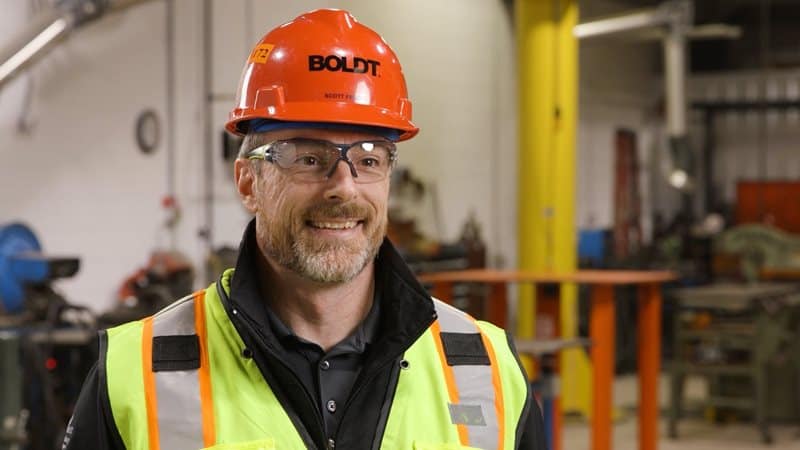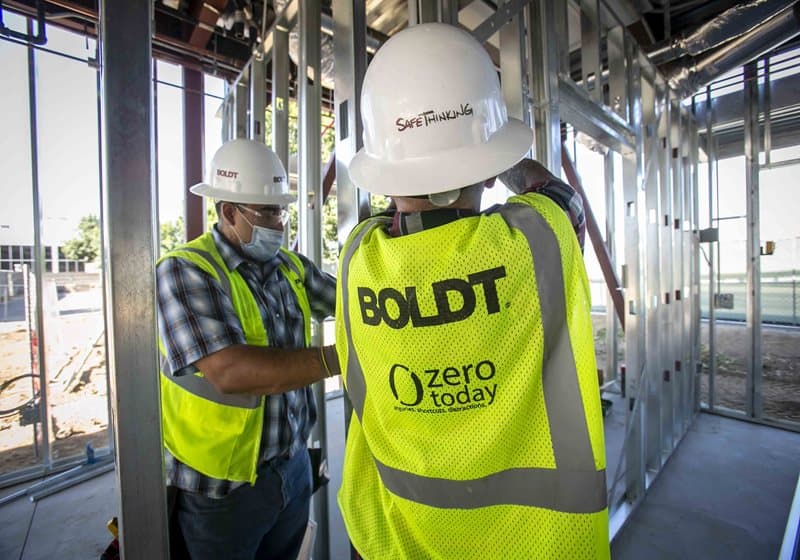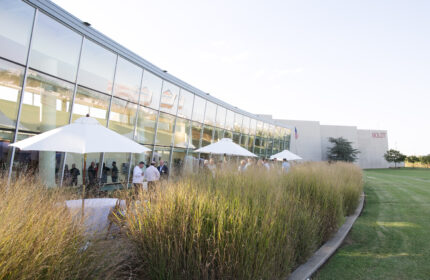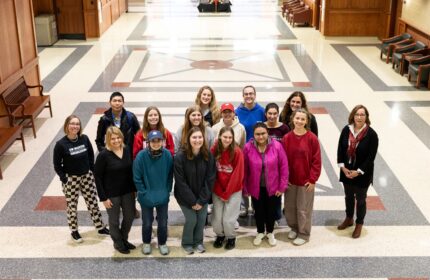Blog
Thinking Safe, Working Safe: A Holistic Approach to Health and Wellness in the Workplace

When you think of “safety” in the construction industry, what comes to mind? For most, it’s hard not to conjure up familiar images of hard hats, vests, safety glasses and other forms of Personal Protective Equipment (PPE). So, while these measures are certainly an important aspect of safety, and are often the extent of many safety programs, they clearly aren’t the whole story. Our safety philosophy encourages safe thinking, establishes a company-wide safety culture, strives to achieve ‘zero injuries,’ and asks our workforce “to be present, be focused and be safe.”
SafeThinking
The Boldt Company’s safety program takes a holistic approach. We believe that safety is something that we are, not just something that we do. Dubbed “SafeThinking,” Boldt’s program is founded on three core beliefs:
- Our safety actions are most effective when we genuinely care about each other.
- Each of us has a personal responsibility for our own safety and the safety of others – on and off the job.
- Injuries can be avoided when safety is built into our plan and we practice safe behaviors.
Central to SafeThinking is the philosophy that everyone at Boldt plays a role in the safety of our own employees and everyone working on a Boldt jobsite, or in the office. Here are some examples of how we collectively contribute to safety through SafeThinking:
- Our leadership is actively committed to eliminating incidents.
- We maintain a dedicated team of safety experts that create industry leading best practices and training for our activities.
- Management is engaged in conversations about safety with the workforce.
- We practice continuous, positive reinforcement for safe behaviors and hazard recognition.
- We create and train workers on standardized best practices, processes and checklists that minimize on-the-job risks.
- Our teams use predictive technology and analytics to prevent incidents before they happen.
- And lastly, we create an environment that promotes psychological health and wellbeing.

Managing Health and Safety in Construction Culture
Communicate: In addition to holding weekly safety talks, a great way to increase safety communication while building a positive culture is to engage our employees on a daily basis. The purpose of these engagements is specific to their safety and the safety of the project.
Lead by example: Leading by example means following all safety policies and encouraging others to do the same. It is crucial that we lead by example if we are to have a positive safety culture. People don’t buy in to safety if they don’t see others following our policies and procedures. Safety is more than talking the talk, it’s walking the walk.
Build strong relationships: Relationships really matter in safety. Great safety cultures are characterized by strong relationships at all levels, which enable open, honest conversations about what is working and what can be improved. Setting clear expectations, providing helpful feedback, acknowledging good work, seeking to understand problems/issues rather than blaming, active listening, following through on commitments, removing roadblocks and asking for feedback on your own effectiveness are some of the ways we can build and sustain good relationships – and a strong safety culture.
Be Present. Be Focused. Be Safe.
This year’s National Safety Week in May paid special attention to the role mental health and mindfulness play in creating a culture of safety. Even the best PPE, best processes and best training are only effective if your mind is on task and free of distractions. As an employer, we have a responsibility to create an environment that fosters mental wellbeing as well as physical. Here are steps that all companies can take to promote mental health on the jobsite and in the office:
- Raise awareness of mental health issues and how to recognize early warning signs in ourselves and others.
- Create a drug- and substance-free work environment.
- Create an open environment for employees to discuss issues related to mental health, safety and working conditions.
- Create an environment of respect that empowers employees to put safety at the forefront, not production.
- Connect employees to resources for improving and achieving mental health and wellbeing.
Zero Today
Ultimately, our goal is to achieve zero injuries in the workplace. While some firms treat accidents as an inevitable aspect of construction, Boldt’s “Zero Today” initiative is based on the belief that all accidents are avoidable and that achieving “zero” is possible if we focus on eliminating shortcuts, distractions, and near misses one day at a time.
It’s Boldt’s mission to protect everyone related to a project from injury – employees, subcontractors and any site visitors. That requires more than compliance with safety regulations. It means creating an atmosphere where safety is at the forefront of all that we do. Where everyone’s got each other’s back and a culture of caring is established. Where managing health and safety in construction is a state of mind – every day, in every office and on every jobsite.
Thought leadership provided by:
Scott Frazer VP of Safety for The Boldt Company
About The Boldt Company
The Boldt Company (Boldt) is a leading professional construction services firm with customers across the United States and is a subsidiary of The Boldt Group. Founded in 1889, Boldt is a fourth-generation family and employee-owned firm headquartered in Appleton, Wisconsin. Boldt is recognized as a pioneer in Lean construction and in the industrialized construction space. Boldt operates 18 offices across the U.S. that serve customers in healthcare, power, industrial, education, automotive and commercial markets.


